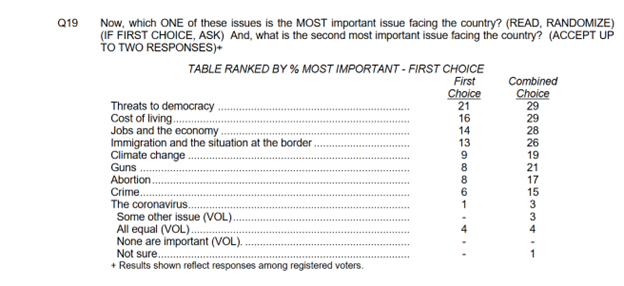The Daily Escape:

Sunset, midtown Manhattan viewed from the Williamsburg Bridge – March 2023 photo by Mike Davis
Plenty of ink has been scrawled or printed describing how the Supreme Court (SCOTUS) has navigated its way into being the supreme executive branch of our government. The SCOTUS has long been a bastion of Conservative thought in America, but since gaining its 6-person supermajority, we’re seeing them bring forward novel legal concepts to help move decisions towards the Right’s agenda.
The best example is the Court’s majority creating new “doctrines” to help deliver rulings that their clients on the Right argue for. Prior to embracing “the major questions” doctrine and the “Independent state legislature” doctrine, Conservative members of the court used to insist on “textualism” to achieve their goals. Textualism says that when interpreting the Constitution, judges should confine themselves only to the words of the Constitution. Originalism says that if the words are unclear, then judges need to consult historical sources to determine their meaning at the time of ratification.
But we’re now seeing cases where a statute’s words aren’t delivering a decision that the Supremes are aiming for, so using these new doctrines give them a pretext for breaking their own rules.
That’s how they blew up the EPA’s Clean Power Rule. Eight months ago, SCOTUS first invoked the “major questions doctrine” in a majority opinion, using it to limit the Environmental Protection Agency’s power to address climate change.
Last week, the court seemed ready to use it again, to kill Biden’s proposed student loan relief. More on the new “doctrines” from the NYT’s Adam Liptak: (brackets by Wrongo)
“On the last day of the 2021-22 Term, the Supreme Court handed down a decision on “the major questions doctrine” and [agreed] to hear a case presenting “the independent state legislature doctrine” – neither of which had been called “doctrines” there before.”
The rationale behind the major questions doctrine is the contention by the Justices that the agencies must receive explicit direction from Congress to address a particular issue if action by the agency is of political or economic significance. Conveniently, this “doctrine” gives the Court’s Conservative supermajority a tool to achieve their preferred outcomes when textualism doesn’t get them there.
Liptak quotes Allison Larsen, a law professor at William & Mary:
“The phrase was used just once by any federal judge before 2017, and in only five federal decisions — at any level of court — before 2020,”
But you guessed it, the turning point in 2017 was when Justice Brett Kavanaugh, then a judge on the US Court of Appeals, used the term in a dissent. More from Professor Larsen: (brackets by Wrongo)
“[Using] the word ‘doctrine’ to describe the major questions concept was first used by law professors and then bandied about on blogs…and used as a rallying cry in opinion pieces and programming by those seeking to challenge the administrative state….In 2016 — long before it was anointed a ‘doctrine’ by the Supreme Court — the ‘major questions doctrine’ was featured by name in the annual Federalist Society conference,”
Interestingly, at Kavanaugh’s Supreme Court confirmation hearings, Sen. Amy Klobuchar (D-MN) asked him about the doctrine, calling it “something else that you (Kavanaugh) came up with.” Liptak reports that Kavanaugh responded vaguely that the “major questions doctrine is rooted in Supreme Court precedent.”
In his 2017 dissent, Kavanaugh conceded that “determining whether a rule constitutes a major rule sometimes has a bit of a ‘know it when you see it’ quality.” That’s some real Wavy Gravy right there.
Back to the EPA case: Chief Justice Roberts wrote that the Court’s use of the term was unexceptional:
“It took hold….because it refers to an identifiable body of law that has developed over a series of significant cases all addressing a particular and recurring problem: agencies asserting highly consequential power beyond what Congress could reasonably be understood to have granted.”
Turning to the student loan debt relief case, in the oral arguments, Roberts argued that since loan relief is expensive, it must be authorized by Congress. But as Justice Elena Kagan said in the same oral argument, “Congress could not have made this much more clear, adding, “We deal with congressional statutes every day that are really confusing. This one is not.”
Welcome to 2023, where when cases come out the way the Conservative justices want, it’s just fine. But if the legal text gets in the way, the “major questions doctrine” allows them to make the explicit text disappear because they’re willing to engage in bad faith readings of statutes to get the job done.
So much for the rule of law.
If under a Republican president, when the Supremes need to find a sweeping executive branch authority to justify a Conservative wet dream policy, they’d find it without even a whiff of self-reflection.
Will we ever make up the ground now being lost to the decisions by these ideologues?









